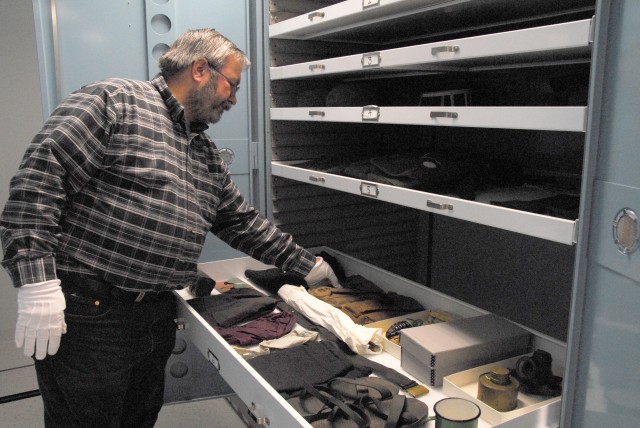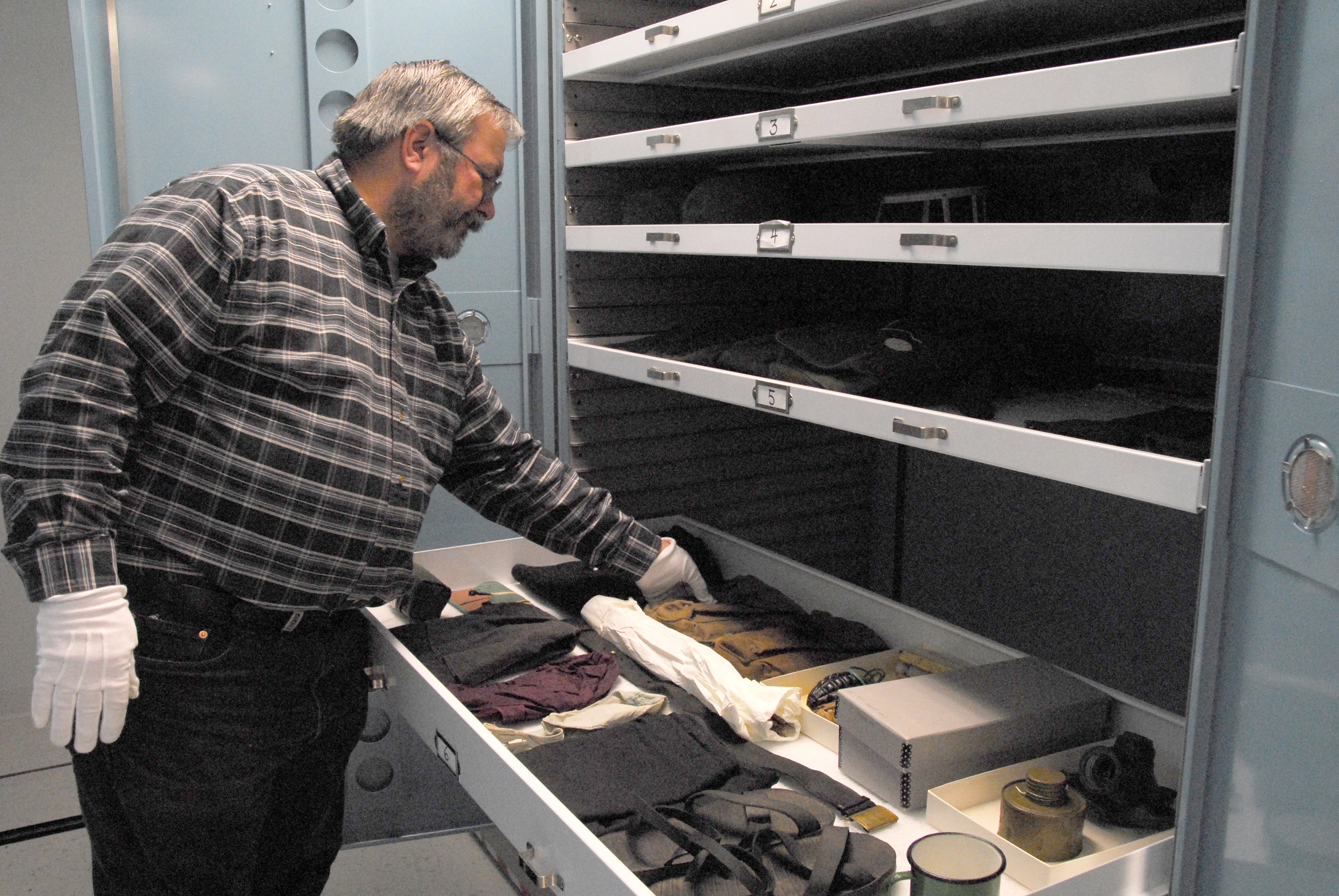From World War I uniforms and field gear to bayonets and daggers, the last of about 2,800 Army artifacts was transported Jan. 27 to the Fort Meade Museum's new storage facility.
Located on 20th Street on Route 175, the $780,000 storage facility includes a warehouse, offices, research room and library/archives. It was built adjacent to the Directorate of Information Management building, which is slated to become the museum's new home.
"To have a clean, pretty, efficient new building, it's like we died and went to heaven," said Barbara Taylor, museum exhibits specialist at the Fort Meade Museum.
Artifacts and archives were temporarily moved last May from the museum's previous storage facility at 4272 Leonard Wood Ave. so the site could be used as a Baltimore Gas and Electric Company substation.
Museum staffers arranged for items to be packed by a fine arts shipper and transported to U.S. Art in Washington, D.C., a fine art handling company specializing in museum-quality storage. Most paper items -- such as diaries, artwork and posters -- were stored in the museum's archives and moved to a temporary office building on post. Firearms and insignia also were stored on Fort Meade.
"Army regulation requires that Army museums maintain the integrity of the Army materiel culture that we are in charge of collecting, preserving, studying and displaying," Taylor said.
Artifacts were packed in acid-free, special plastic that doesn't break down and emit gases, then transported in climate-controlled tractor-trailers. "We filled an 18-wheeler and three pup-truck loads," Taylor said.
Because of space considerations, artifacts were shipped out and back to Fort Meade in stages. "Our new facility wasn't big enough to house all the boxes," Taylor said. "Once boxes were unpacked, then we got another shipment."
The task of unpacking the four shipments and cataloging fell to Richard Frank, collections technician at the museum. Frank, along with a staffer and two contractors from the Center of Military History in Washington, D.C., the museum's parent organization, unpacked about 180 boxes of artifacts. Archived items still need to be unpacked.
The bulk of artifacts were placed in museum-grade steel cabinets. Uniforms are hung and arranged by era and nationality. Field gear is grouped by war, nationality and era. "Everything dates from World War I," Frank said. "Few items are older than that."
The museum's total collection is valued at $8 million to $10 million, said Taylor. Stored items will take their turn at being exhibited in the new museum. "What's the point if we can't display it'" she said.
Regulations of operations of U.S. Army museums require exhibits to be rotated. "The concern is the longevity of the items," Taylor said. "Once it becomes an item in our collection, we are obligating the government in caring for this artifact in perpetuity. So we're careful about what we bring in."
In addition to uniforms and weapons, the museum's 4,000 artifacts include insignia, diaries, photo albums, posters and newspapers such as the Fort Meade Post and Second Army Sentinel.
One of the more unusual items is a parchment of a Knights Cross award signed by Hitler and found by the U.S. Field Artillery Unit during World War II. "They flipped it over and kept it as a map of their trip across Germany," Taylor said.
Another item is a risquA...A1/2 "Lace" cartoon drawn by Milton Caniff of Yank magazine for the men of Fort Meade during World War II.
Bayonets, knives and guns are not displayed because of relative humidity. "Our humidity here is problematic, so we have few steel weapons on display because they would rust," Taylor said.
In a separate facility, the museum also stores artillery, limbers -- boxes pulled behind towed artillery that carry ammunition -- canvas-topped vehicles and captured enemy equipment such as German mortars.
A familiar landmark outside DOIM is a 1950s Nike Hercules missile that is part of the museum's collection.
Once DOIM moves on post, design plans will be drawn for a new, larger museum in the current DOIM building. "There's no timeline when we will move," Taylor said.
But the new museum is slated to open to the public by 2017, in time for the Fort Meade centennial celebration.
"This is one reason why we want to be off base," Taylor said. "Before 9/11, we had 30,000 visitors a year. Now we have less than 10,000."
Displaying artifacts off post, she said, will draw more visitors to the vast collection. "We have a fabulous outreach program," Taylor said. "And we have such cool stuff."


Social Sharing